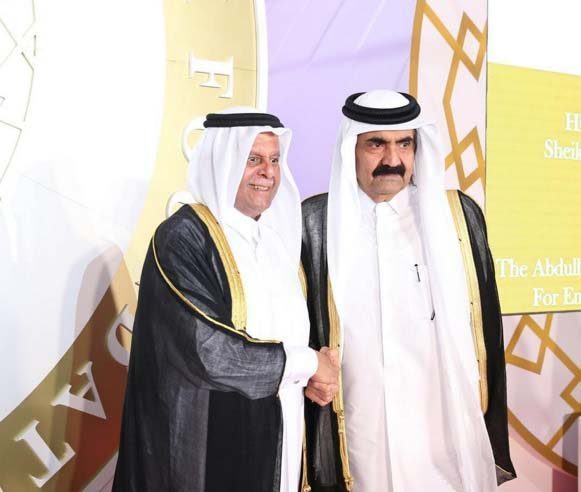
Gulf states need to cut domestic energy consumption or face losing their position as global energy providers, the Middle East’s first energy think tank warned yesterday.
The Abdullah bin Hamad Al Attiyah Foundation for Energy and Sustainable Development, which was set up by the country’s former minister for energy and industry and deputy prime minister, was inaugurated last night by Qatar’s Father Emir Sheikh Hamad bin Khalifa al Thani.

In his keynote address at the Doha launch, foundation board member and economic advisor to the Emir Dr Ibrahim Al-Ibrahim bluntly warned Gulf states that they face losing critical export revenue if they don’t become more energy efficient and reverse the trend of soaring consumption at home.
“As the rest of the world is gradually turning towards greater energy efficiency in economic terms, much of the GCC is going the other way, using ever more energy to produce a unit of economic growth and becoming less competitive in the process.
“If these long-term consumption trends continue, the Gulf States are forecast to be just a few decades away from relinquishing their long-held position as global energy suppliers,” he said in his keynote speech.
Subsidy debate
Qatar’s high levels of energy consumption are often blamed on its generous state subsidies, which offset prices for residents and offer minimal financial incentive to monitor and reduce consumption.
In a report issued this summer, the International Monetary Fund (IMF) found Qatar had the highest energy subsidies per capita in the world, forecasting total state subsidies after tax worth $14.47 billion this year, equating to nearly $6,000 a head, based on a population of 2.41 million.

Qatar’s small population often distorts figures measured on a per capita basis. As a percentage of its GDP, Qatar’s subsidies represent around 6.37 percent – significantly less than its other regional neighbors.
Saudi Arabia is the top energy subsidizer in the region at 13.23 percent of its GDP, followed by Oman (8.9 percent) and Kuwait (7.79 percent).
And the countries in the region are using increasingly more energy. Gulf states, which make up 1.5 percent of the world’s population, consume around 5 percent of its oil.
The Gulf’s 2001 consumption of 220 million tons of oil equivalent nearly doubled by 2010 and is expected to nearly double again by 2020, the Al Attiyah Foundation said in a statement.
The foundation aims to use international energy experts to publish research and reports advising mostly Gulf states on how to become more efficient and develop in a sustainable way.
While petrol, fuel and other subsidies are common and popular in the region as a welfare measure, economists argue they are an inefficient way of using the region’s natural resources wealth to enrich the lives of citizens. Subsidies are also criticized for being a drag on government finances and encouraging the over-consumption of water, electricity and fuel.
Last year’s collapse in oil prices renewed calls by the IMF for the countries in the GCC and broader Middle East and North Africa region to reform their subsidy schemes.
The UAE announced in July that from Aug. 1 it would drop its fuel subsidies in a bid to relieve some of the pressure on its economy caused by falling oil prices.

Saudi Arabia was also said to be reconsidering its petrol subsidies, which help to make its fuel prices among the lowest in the world.
However, Qatar’s finance minister ruled out making similar changes in the state. In a statement in September this year, Ali Shareef Al Emadi said Qatar was in a different place financially, as it has a strong national budget and cash reserves that could help it withstand low oil prices.
High energy use
Qatar is one of the world’s largest consumers of water and electricity per capita and its use is increasing as its population booms.
Last year, the amount of electricity generated in Qatar jumped 11.6 percent to 38,693 gigawatt hours (GWh), according to the most recent figures from Kahramaa. In rough terms, that’s nearly enough electricity to power 3.4 million homes for a year.
However, electricity is also used to power large industrial operations in Qatar as well as the desalination plants that provide the country’s drinking water.

There are several local campaigns such as Tarsheed, which aim to increase awareness of energy use, although so far with little success.
In an apparent attempt to take a firmer line on the problem, the Emir last month signed off a new law which has doubles the fine for wasting water and electricity.
That came just weeks after state energy provider Kahramaa also quietly increased tariffs for energy and water usage, apparently without notice.
Thoughts?







